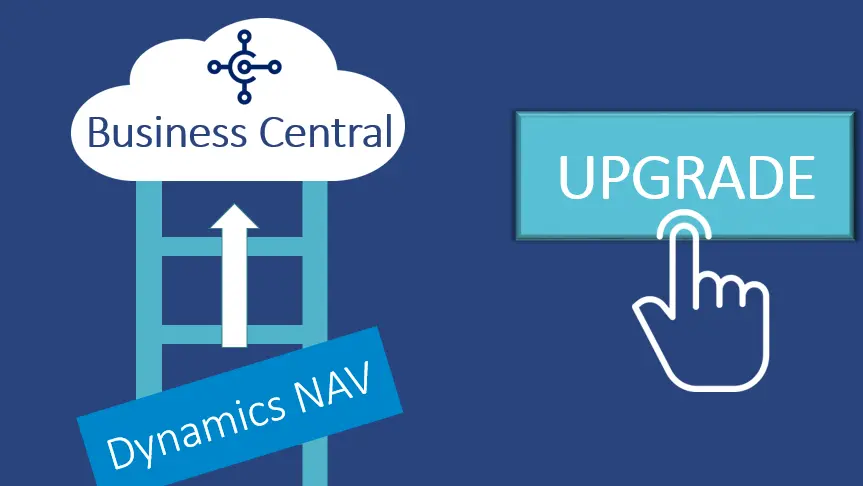In the dynamic landscape of business technology, adapting to the latest solutions is not just beneficial; it’s essential. For users of Microsoft Dynamics NAV to Business Central represents a strategic move, offering enhanced functionalities and a more streamlined experience. This article is your comprehensive guide, taking you through the step-by-step process of upgrading, ensuring your business stays competitive in the ever-evolving digital era.
Introduction
In a world where agility and efficiency define success, upgrading from Microsoft Dynamics NAV to Business Central is a pivotal step for businesses striving to stay competitive. This article serves as a guide, walking you through the process, from the initial assessment to the post-implementation phase.
Understanding NAV and Business Central
Before delving into the upgrade process, let’s establish a clear understanding of Microsoft Dynamics NAV and its successor, Business Central. Microsoft Dynamics NAV, an enterprise resource planning (ERP) solution, has been a reliable choice for businesses managing finances, operations, and customer relationships. However, Business Central takes this legacy a step further, introducing enhanced features and a modern interface.
Assessment of Current NAV System
The journey begins with a thorough assessment of your current NAV system. This involves identifying pain points, evaluating existing customizations, and understanding the specific needs of your business. A holistic assessment sets the stage for a targeted and effective upgrade.
Benefits of Upgrading to Business Central
Why make the switch? Business Central offers a host of benefits, including advanced features, improved user experience, and a more intuitive interface. The upgrade isn’t just about staying current; it’s about unlocking new capabilities that can propel your business forward.
Benefits of Upgrading from NAV to Business Central
- Enhanced Features and Functionalities:
- Benefit: Business Central offers advanced features, improved reporting, and enhanced capabilities compared to NAV.
- Insight: Businesses can leverage new functionalities to optimize processes and gain a competitive edge.
- Modern User Interface:
- Benefit: Business Central boasts a more intuitive and user-friendly interface, enhancing user experience.
- Insight: Improved usability leads to increased productivity and quicker adaptation by employees.
- Cloud Accessibility:
- Benefit: Business Central’s cloud-based nature provides remote accessibility, facilitating collaboration and flexibility.
- Insight: Accessible data promotes efficient decision-making and allows teams to work seamlessly from various locations.
- Long-Term Support and Updates:
- Benefit: Upgrading ensures access to continuous support, security updates, and the latest features from Microsoft.
- Insight: Long-term support guarantees a stable and secure ERP system, aligning with evolving business needs.
- Streamlined Workflows:
- Benefit: Business Central streamlines business processes, integrating finance, operations, and customer relations in one platform.
- Insight: Improved efficiency and coordination lead to a more agile and responsive organizational structure.
- Scalability for Growth:
- Benefit: Business Central is designed to scale with business growth, accommodating increased data, users, and complexities.
- Insight: Scalability future-proofs the ERP system, ensuring it remains effective as the business expands.
Preparing for the Upgrade
Preparation is key to a successful upgrade. Ensure that your data is backed up securely, and communicate transparently with stakeholders about the upcoming changes. This step sets the tone for a smooth transition.
Choosing the Right Version of Business Central
Microsoft offers different versions of Business Central, each catering to specific business needs. Choosing the right version requires a careful consideration of your requirements and objectives. Aligning your choice with your business goals is crucial for a successful upgrade.
Customizations and Add-Ons
If your NAV system includes customizations, it’s time to assess their compatibility with Business Central. Some customizations may need adaptation, while others might require recreation. Ensuring a seamless integration of custom features is essential for continuity.
Data Migration Strategies
The heart of the upgrade lies in data migration. Develop a robust strategy to transfer data from NAV to Business Central efficiently. Minimizing downtime during this process is essential to prevent disruptions in your operations.
Employee Training and Change Management
Don’t underestimate the human element in this technological shift. Properly prepare your workforce for the change by providing training and support. A well-informed and trained team contributes significantly to the success of the upgrade.
Testing the Business Central System
Thorough testing is the bridge between preparation and execution. Implement comprehensive testing procedures to identify and address potential issues before the new system goes live. This proactive approach minimizes the risk of post-implementation hiccups.
Go-Live and Post-Implementation Support
The day has come to launch your upgraded system. A carefully planned go-live strategy ensures a smooth transition. Additionally, providing post-implementation support is vital for addressing any unforeseen challenges promptly.
Monitoring and Optimization
Post-implementation isn’t the end; it’s a new beginning. Regularly monitor the performance of your Business Central system and optimize it for efficiency. This ongoing commitment ensures that your ERP solution continues to meet the evolving needs of your business.
Common Challenges and Solutions
Despite meticulous planning, challenges may arise during the upgrade. This section addresses common issues and provides troubleshooting tips to navigate through potential obstacles, ensuring a successful transition.
Challenges in Upgrading from NAV to Business Central
- Data Migration Complexities:
- Challenge: Transferring extensive data from NAV to Business Central may pose difficulties, leading to potential data discrepancies.
- Solution: Develop a meticulous data migration strategy and conduct thorough testing to ensure data integrity.
- Customization Adaptation:
- Challenge: Existing customizations in NAV may not seamlessly integrate with Business Central, requiring time and effort for adaptation.
- Solution: Evaluate customizations early, allocate resources for necessary adjustments, and prioritize critical functionalities.
- Employee Resistance and Training:
- Challenge: Employees accustomed to NAV may resist the change, leading to productivity disruptions without proper training.
- Solution: Implement a robust change management plan, offering comprehensive training sessions and continuous support.
- Downtime Concerns:
- Challenge: Minimizing downtime during the transition can be challenging, impacting daily operations.
- Solution: Plan the upgrade during non-peak hours, communicate downtime expectations, and have contingency plans in place.
- Integration Issues with Third-Party Apps:
- Challenge: Business Central integration with existing third-party applications may encounter compatibility issues.
- Solution: Prioritize third-party app compatibility, consult with developers, and seek updated versions compatible with Business Central.
Conclusion
In conclusion, upgrading from Microsoft Dynamics NAV to Business Central is not just an upgrade; it’s a strategic investment in the future of your business. By following this step-by-step guide, businesses can navigate the complexities of the transition with confidence, unlocking a world of possibilities for growth and efficiency. If you wish to Upgrade Navision to Business Central, you can Contact Trident Information Systems. We are a Microsoft Dynamics 365 Gold Partner and LS Central Diamond Partner.
Lastly, if you are looking for a reliable implementation partner, you may as well contact Trident Information Systems. We are the Top Dynamics 365 Partners Being Gold D365 Implementation Partner and LS Retail Diamond Partner, we have a massive team of dedicated professionals. Our team is looking forward to serving your business and helping you grow. Contact Us for further information. For more insightful content and industry updates, follow our LinkedIn page.
FAQs
- Is upgrading to Business Central mandatory for all NAV users?
- While not mandatory, upgrading is recommended for accessing advanced features and ensuring long-term support.
- How long does the entire upgrade process take?
- The duration varies based on factors such as data volume, customizations, and testing complexity. On average, it takes a few weeks to a couple of months.
- Can I continue using my existing customizations after the upgrade?
- Some customizations may require adaptation or recreation for compatibility. It’s crucial to assess and address them during the upgrade process.
- What kind of training is essential for employees during the transition?
- Training should cover the new features of Business Central and any changes in daily processes. Hands-on sessions and resources are beneficial.
- How often should I monitor and optimize the Business Central system?
- Regular monitoring is recommended, at least monthly initially, and adjustments can be made based on performance insights.



